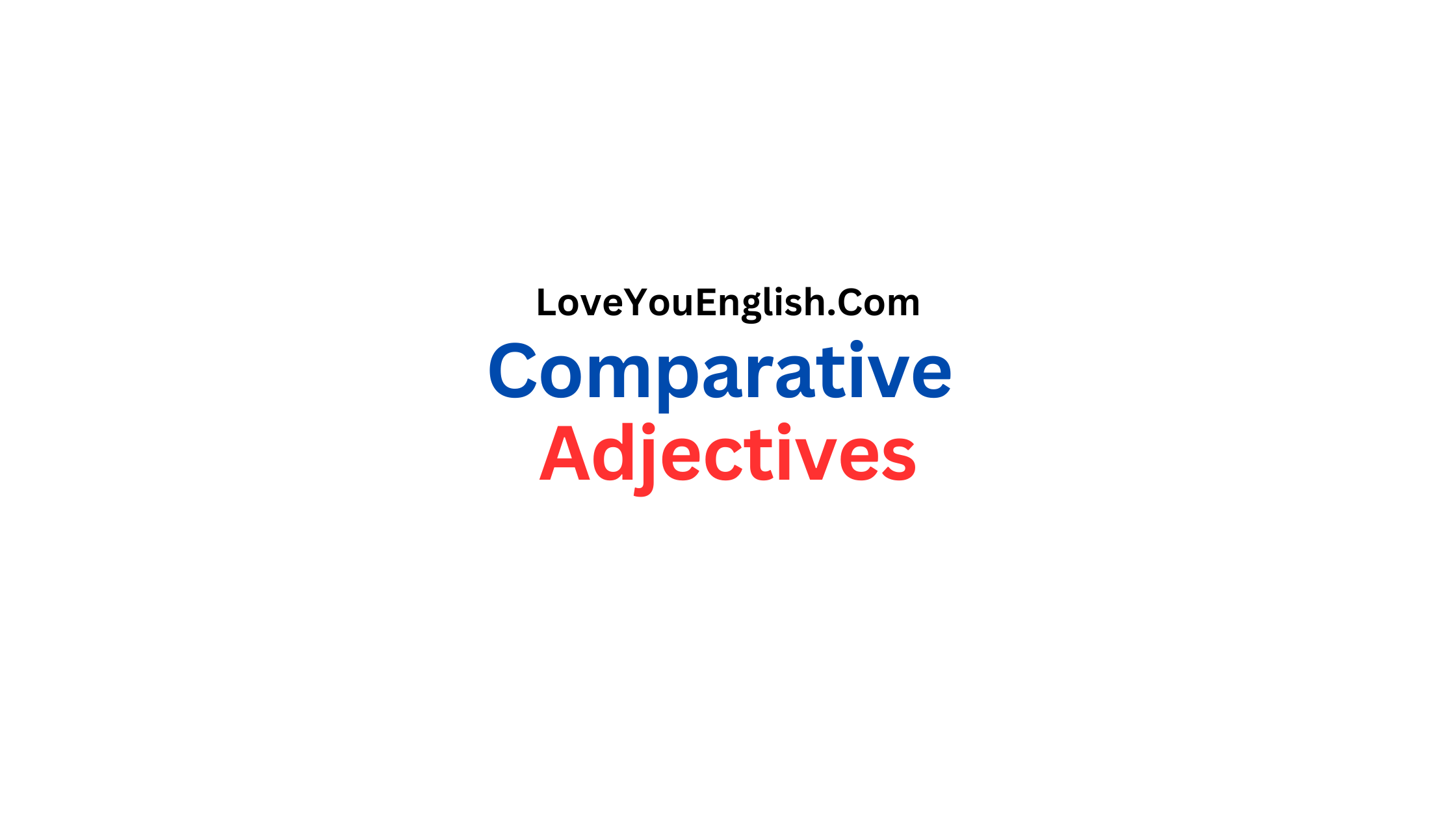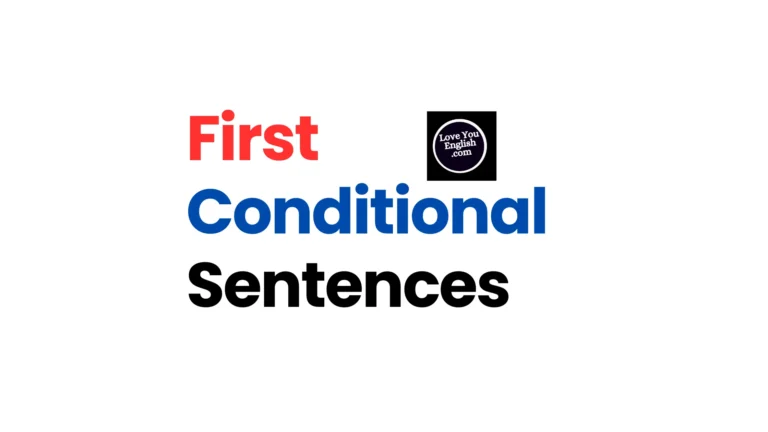What Are Comparative Adjectives? Definition and Examples
Adjectives are words that describe or modify nouns.
They help us to explain what things are like—how they look, feel, sound, or act. There are different types of adjectives, and one important category is comparative adjectives.
In this post, we’ll explore what comparative adjectives are, how to form them, and give plenty of examples to help you understand.
What Are Comparative Adjectives?
Comparative adjectives are used to compare two things or people. They help us show which thing has more or less of a particular quality.
For example, when we say something is bigger or smarter, we are comparing one thing with another.
In simple terms, comparative adjectives help you compare two things. They tell us if one thing has more or less of a certain quality than another thing.
How Do We Form Comparative Adjectives?
In English, most comparative adjectives are formed by adding the word “more” or “less” before an adjective, or by changing the adjective itself.
Let’s break down how to form comparative adjectives:
1. Short Adjectives (One syllable)
For most adjectives that have only one syllable, we add “-er” to the adjective. This is the simplest way to form a comparative adjective.
- Tall → Taller
- Fast → Faster
- Small → Smaller
- Long → Longer
- Cheap → Cheaper
So, when comparing two things, you simply add -er to the adjective. For example:
- John is taller than Tim.
- This car is faster than that one.
2. Adjectives Ending in “-e”
If an adjective already ends in -e, you don’t need to add an extra -e. You just add -r.
- Late → Later
- Nice → Nicer
- Safe → Safer
Example:
- The movie started later than I expected.
- This road is safer than the other one.
3. Adjectives Ending in a Consonant + “-y”
If the adjective ends in a consonant + “-y”, we change the y to i and then add -er.
- Happy → Happier
- Pretty → Prettier
- Busy → Busier
- Funny → Funnier
Example:
- She is happier than I am.
- This dress is prettier than the other one.
4. Long Adjectives (Two or More Syllables)
For adjectives with two or more syllables, we use “more” or “less” before the adjective. We do not add -er in these cases.
- Beautiful → More beautiful
- Expensive → More expensive
- Interesting → More interesting
- Comfortable → More comfortable
- Important → More important
Example:
- This painting is more beautiful than that one.
- This restaurant is more expensive than the other one.
5. Irregular Comparatives
Some adjectives have irregular forms, which means they do not follow the regular rules. These must be memorized.
- Good → Better
- Bad → Worse
- Far → Farther / Further
- Little → Less
- Much → More
- Many → More
Example:
- She is better at swimming than I am.
- This test is worse than the last one.
- I can run farther than you.
When Do We Use Comparative Adjectives?
Comparative adjectives are used in specific situations. The main purpose is to compare two things or people. Here are some examples of when to use comparative adjectives:
1. Comparing Two People or Things
Comparative adjectives are used to show which of two things has more or less of a quality.
- My house is bigger than your house.
- This book is more interesting than that one.
- She is taller than her sister.
2. Showing Difference in Quality
We can use comparative adjectives to explain how one thing is different from another.
- This bag is cheaper than that one.
- The weather today is warmer than yesterday.
3. Expressing Preferences
Comparative adjectives are often used when talking about personal preferences.
- I like this movie more than that one.
- I prefer this color over that one.
4. Talking About Progress or Improvement
We also use comparative adjectives when talking about progress or how something has changed.
- He is getting better at playing the guitar.
- The new version of the app is more user-friendly.
Examples of Comparative Adjectives
Now, let’s look at some more examples of comparative adjectives. We’ll divide them into categories to make it easier to understand.
1. One-Syllable Adjectives
- Cold → Colder
- Bright → Brighter
- Fast → Faster
- Hard → Harder
- Rich → Richer
Example sentences:
- It is colder today than it was yesterday.
- This lamp is brighter than the other one.
2. Two-Syllable Adjectives
- Happy → Happier
- Lovely → Lovelier
- Busy → Busier
- Friendly → Friendlier
Example sentences:
- She is happier now than she was last year.
- The hotel was friendlier than I expected.
3. Long Adjectives (More than Two Syllables)
- Beautiful → More beautiful
- Comfortable → More comfortable
- Interesting → More interesting
- Expensive → More expensive
Example sentences:
- The park is more beautiful in the spring.
- This sofa is more comfortable than the old one.
4. Irregular Comparative Adjectives
- Good → Better
- Bad → Worse
- Far → Farther / Further
Example sentences:
- She is a better student than him.
- The weather is worse today than it was yesterday.
Common Mistakes with Comparative Adjectives
Using comparative adjectives correctly can sometimes be tricky. Here are some common mistakes that people make:
1. Using “-er” with Longer Adjectives
It’s easy to make the mistake of adding -er to adjectives with two or more syllables. But remember, for these adjectives, we must use more or less.
- Incorrect: more taller
- Correct: taller
Example:
- My car is more taller than his. (Incorrect)
- My car is taller than his. (Correct)
2. Using “More” with One-Syllable Adjectives
Another mistake is using more with one-syllable adjectives. For these, you should add -er, not use more.
- Incorrect: more fast
- Correct: faster
Example:
- He is more fast than I am. (Incorrect)
- He is faster than I am. (Correct)
Conclusion
Comparative adjectives are an important part of English grammar. They help us compare two things or people, making our speech and writing clearer.
Remember, for most short adjectives, you just add -er, and for longer adjectives, you use more or less. Some adjectives have irregular forms, so it’s important to memorize them.
By practicing with these rules and examples, you’ll improve your ability to describe and compare things in English.
Comparative adjectives make communication more interesting and allow us to express our opinions and preferences clearly.
So, the next time you want to compare two things, you’ll know just how to do it!
FAQs About Comparative Adjectives
1. What is a comparative adjective?
A comparative adjective is used to compare two people, things, or ideas. It shows which one has more or less of a quality.
Example: She is taller than her brother.
2. How do you form comparative adjectives?
-
One-syllable adjectives: Add -er → tall → taller
-
Two-syllable adjectives ending in -y: Change y to i + -er → happy → happier
-
Long adjectives (2+ syllables): Use more or less → beautiful → more beautiful
-
Irregular adjectives: Some don’t follow rules → good → better, bad → worse
3. When should I use comparative adjectives?
Comparative adjectives are used to:
-
Compare two people or things
-
Show difference in quality
-
Express preferences
-
Talk about improvement or progress
4. Can I use “more” with one-syllable adjectives?
No. For one-syllable adjectives, you usually add -er.
Incorrect: more fast
Correct: faster
5. Can I use “-er” with long adjectives?
No. For adjectives with two or more syllables, use more or less instead.
Incorrect: more taller
Correct: taller
6. What are some common irregular comparative adjectives?
-
Good → Better
-
Bad → Worse
-
Far → Farther / Further
-
Little → Less
-
Many / Much → More
7. Do comparative adjectives always compare in a positive way?
Not necessarily. They can show both positive and negative differences.
Example: This movie is better than the last one.
Example: The weather today is worse than yesterday.
8. How can I practice using comparative adjectives?
-
Compare two objects around you: This chair is more comfortable than that one.
-
Talk about people: She is taller than her friend.
-
Write sentences about daily life using comparatives.
9. Are comparative adjectives the same as superlative adjectives?
No. Comparative adjectives compare two things, while superlative adjectives compare three or more things.
Example: John is taller than Tim (comparative)
Example: John is the tallest in the class (superlative)
10. Why are comparative adjectives important?
They make your language more descriptive and allow you to express differences, preferences, and opinions clearly.
Read more:
- Collocations with “Big” and “Small” for Students
- Collocations with “Dream” and “Goal” for Personal Growth
- Collocations with “Take” and “Have” in Everyday Conversations






